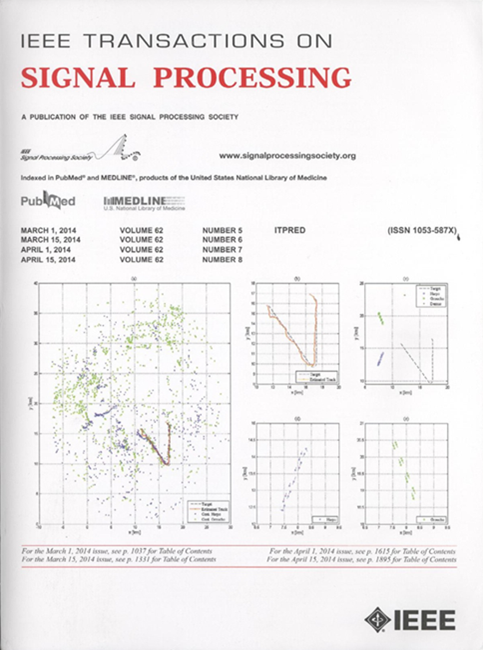从基本元素视角重温高阶张量奇异值分解
IF 4.6
2区 工程技术
Q1 ENGINEERING, ELECTRICAL & ELECTRONIC
引用次数: 0
摘要
最近,基于张量-张量乘积(t-product)的张量奇异值分解(t-SVD)已成为处理三阶张量数据的强大工具。然而,受限于基本元素是 t-积中的纤维(即矢量)这一事实,高阶张量数据(即阶数 $d>3$)通常被展开成三阶张量以满足经典的 t-积设置,这导致了高维结构的破坏。通过重新审视 t-积中的基本元素,我们提出了一种称为基于元素的张量-张量积(elt-product)的广义 t-积,作为经典 t-积的替代品,其中的基本元素是 $(d-2)$th-order 张量而不是向量。elt-product的优点在于它能更好地保留高维结构,并能通过高阶卷积而不是经典t-product中的一阶卷积来探索更复杂的相互作用。从elt-product 开始,我们开发了新的张量-SVD 和低阶张量度量(如秩和核规范)。利用建议的度量,我们提出了高阶张量数据的张量完成模型,并证明了精确的恢复保证。为了解决由此产生的非凸优化问题,我们应用了一种具有理论收敛保证的交替乘法(ADMM)算法。在模拟和真实世界数据(彩色视频、光场图像、光场视频和交通数据)上的大量实验结果表明,与最先进的基线模型相比,所提出的模型更具优势。本文章由计算机程序翻译,如有差异,请以英文原文为准。
Revisiting High-Order Tensor Singular Value Decomposition From Basic Element Perspective
Recently, tensor singular value decomposition (t-SVD), based on the tensor-tensor product (t-product), has become a powerful tool for processing third-order tensor data. However, constrained by the fact that the basic element is the fiber (i.e., vector) in the t-product, higher-order tensor data (i.e., order
$d>3$ $(d-2)$
求助全文
通过发布文献求助,成功后即可免费获取论文全文。
去求助
来源期刊

IEEE Transactions on Signal Processing
工程技术-工程:电子与电气
CiteScore
11.20
自引率
9.30%
发文量
310
审稿时长
3.0 months
期刊介绍:
The IEEE Transactions on Signal Processing covers novel theory, algorithms, performance analyses and applications of techniques for the processing, understanding, learning, retrieval, mining, and extraction of information from signals. The term “signal” includes, among others, audio, video, speech, image, communication, geophysical, sonar, radar, medical and musical signals. Examples of topics of interest include, but are not limited to, information processing and the theory and application of filtering, coding, transmitting, estimating, detecting, analyzing, recognizing, synthesizing, recording, and reproducing signals.
 求助内容:
求助内容: 应助结果提醒方式:
应助结果提醒方式:


